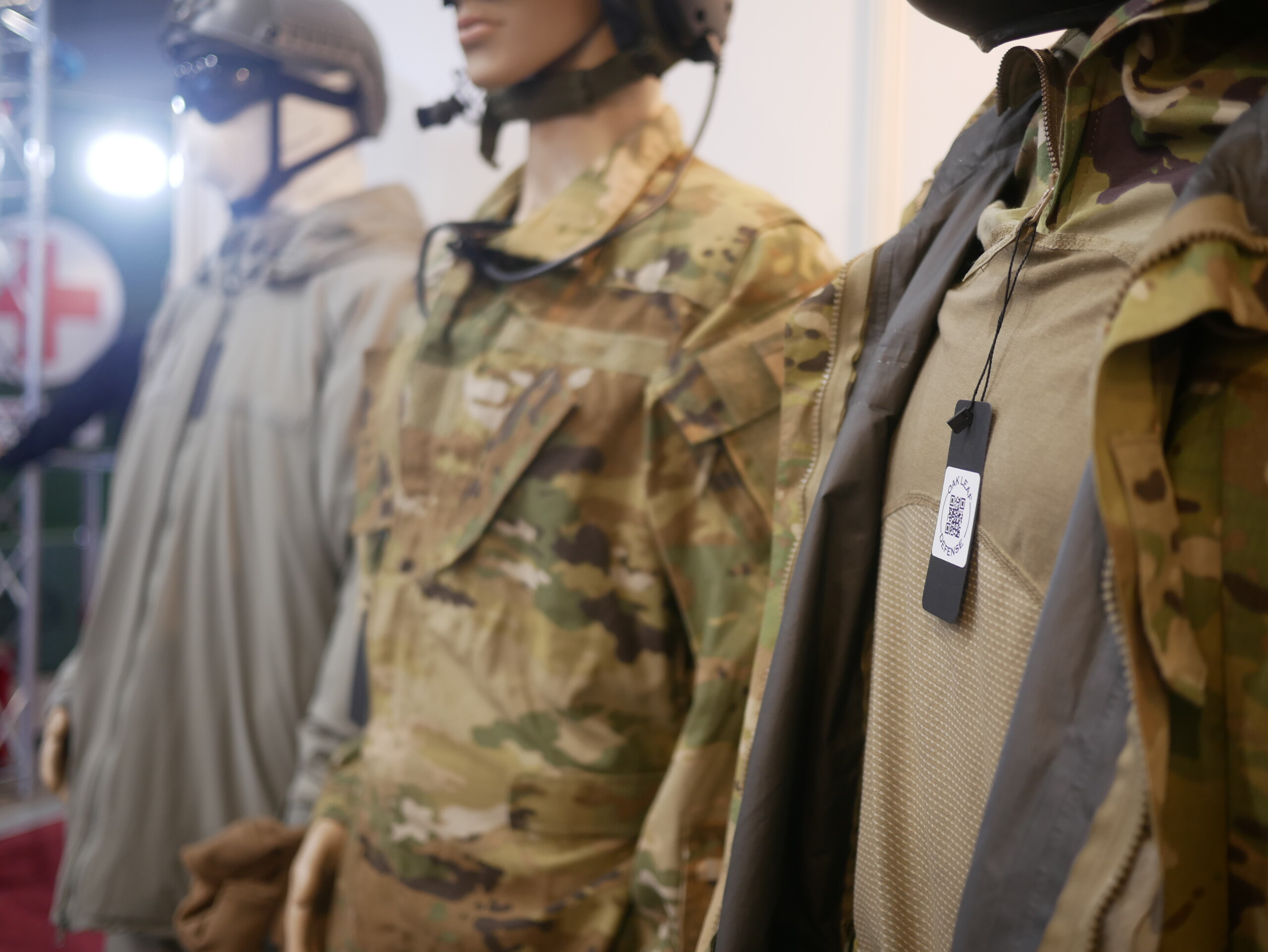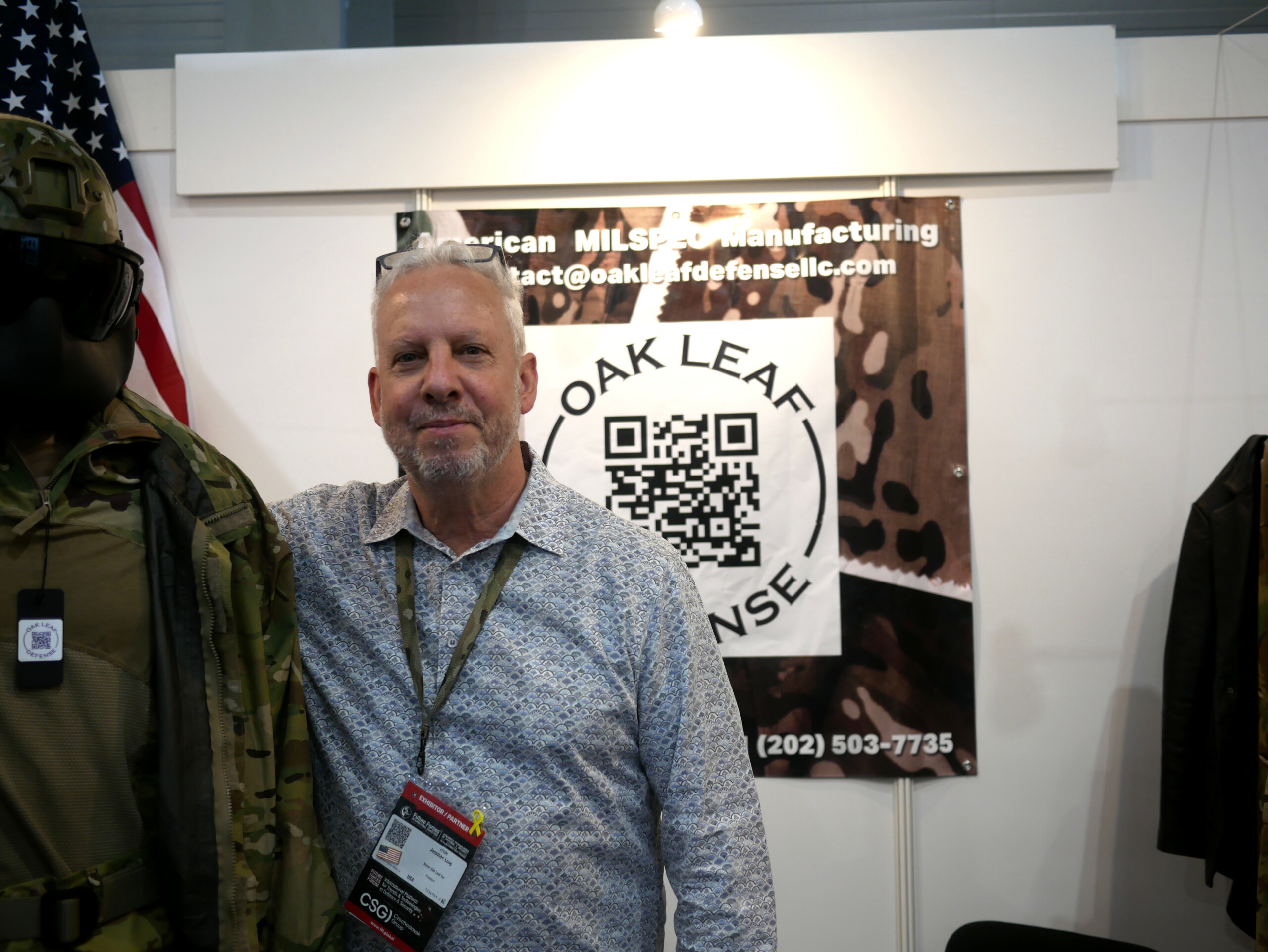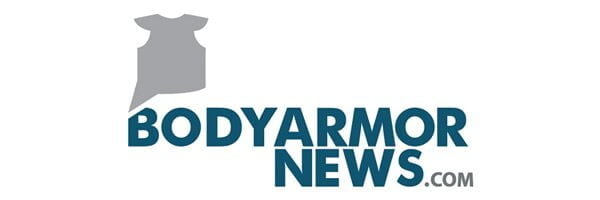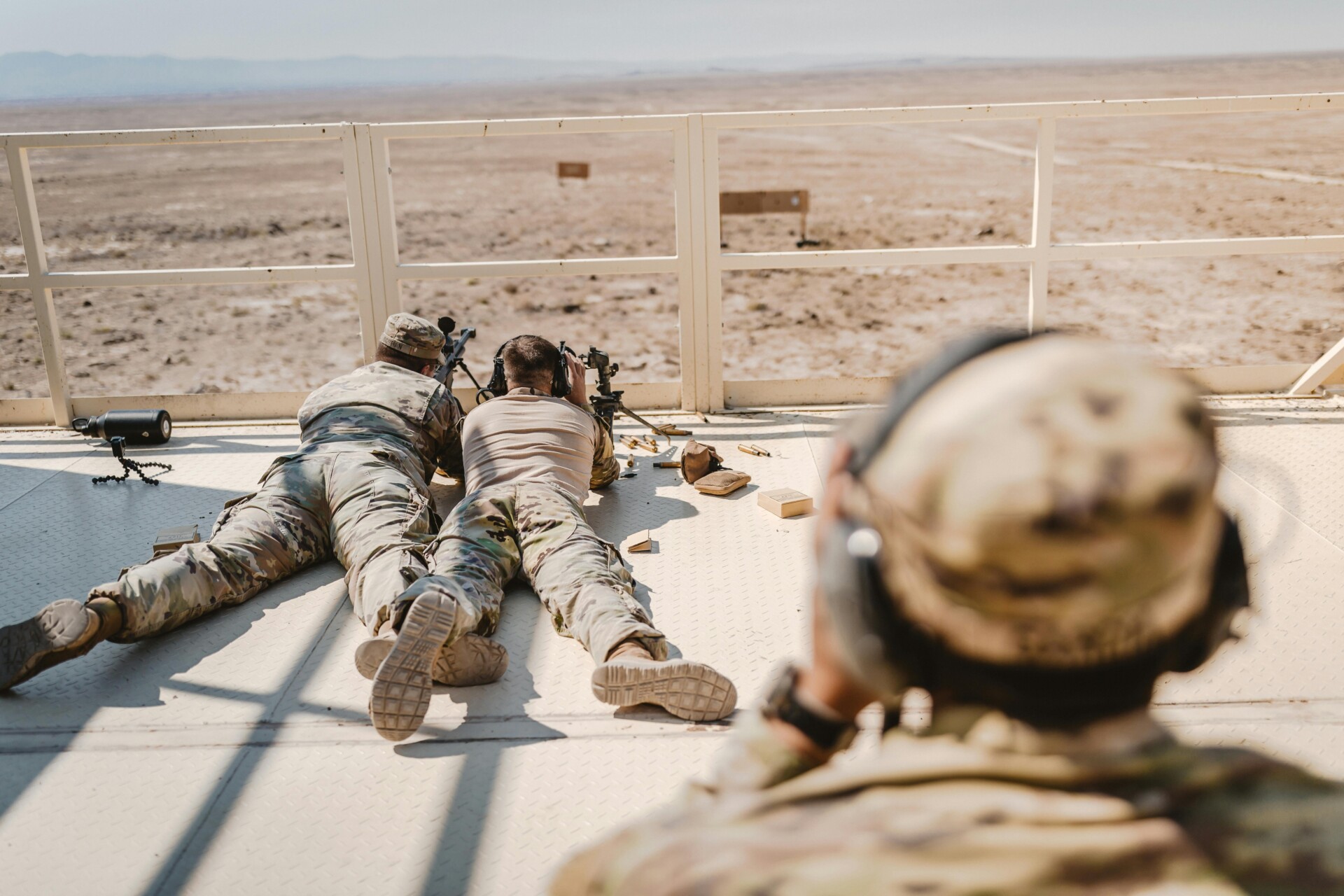‘’War is not humane and war is very dirty in the front,’’ says Jonathan Long, president of Silver Leaf Oak Inc. in an interview with BodyArmorNews.com. Earlier this Fall, similar words were said by Krzysztof Urban, CTO at BC Arms who started the conversation with: ‘’War is always a hell.’’
While these statements carry sentiments that have been heard before, they do add a unique perspective on the body armor manufacturing, when expressed by the war veterans. These words, rather than obnoxious marketing slogans, come from a personal space, and importantly, years of invaluable, horrific experience. Eventually, who knows better than someone who has experienced the horrors of war firsthand, how to improve the body armor market, and what are the primary needs of soldiers today?
 Krzysztof Urban at BCArms booth during MSPO 2024 in Kielce, Poland
Krzysztof Urban at BCArms booth during MSPO 2024 in Kielce, Poland
For Krzysztof Urban, it was his time at the frontline in Kharkiv, Ukraine that motivated improvements at BC Arms. BodyArmorNews.com wrote an article about how they enforced their ballistic hard armor plates after realizing the reality of deadly Russian artillery. Before Jonathan Long developed his idea for strap cutter tool, or Army Combat Hiker Boots used in Afghanistan, he served as a soldier in countries in the Middle East and others; in South Korea; at the Mexican border to interdict drug smuggling; in Germany and Poland training, and working within NATO; and in Bosnia during the 90s. How exactly did those vastly different environments turn into ideas for products?
‘’An example I can share, is that the first soldiers that were killed while I was in Bosnia, their death was a result of, they were strapped in their seatbelts. Their truck rolled over into a river, and they drowned. You have to wear a seatbelt, because if you get an explosion and you’re not wearing a seatbelt, your body becomes a projectile, and it can hit the driver, it can go through the window. You have to wear a seatbelt. I thought, you know, if we had a tool that could cut everything away and you could get out, that would be awesome.’’
Long carried this memory all the way to Iraq where again, soldiers struggled with similar issue:
‘’[…] When I arrived there at the end of the year in 2004, in the palace and the headquarters systems, every day you see a report on who’s wounded and who’s killed. And we had soldiers being casualties, because in Iraq there’s a lot of water canals all over the place. And their Humvees were hit, exploded, and they rolled into a water canal and then they all drowned. So at that point, I knew my next job was going to be soldier equipment in the U.S. Army in Fort Belvoir.’’
 Silver Oak Leaf’s booth during FFF24 in Prague
Silver Oak Leaf’s booth during FFF24 in Prague
In Fort Belvoir, Long’s task was to improve protection systems such as gloves, boots, glasses, and even socks, for which he got a significant budget. Together with Benchmade Knives they also came up with a strap cutter tool, a result of lessons learned at the front. This innovation has quickly been adopted by the army, becoming standard equipment in every soldier’s first aid kit.
‘’It was so efficient in medical situations, in IEDs, and even the doctors would use it instead of scissors. They would take this tool and just put it on their collar, strip it all the way down, right through your boots, and the clothes could come off,’’ explains Long.
As he sums up, sometimes ‘‘the best things are simple’’, and while indeed they do sound obvious, these innovations were only possible through the tough live-and-learn kind of process. What comes up is that warfares and environments tend to always surprise with different challenges. Things that worked quite well before, do not work as great in all situations:
‘’[…] The rocks and shale in the Afghanistan hills was shredding our boots,’’ says Long, moving forward from his time in Iraq. ‘’I worked with a company called Danner Boots. I sent them a box of rock and gravel from Afghanistan, and I said, ‘look, you have to make a boot that can handle this type of abrasion, because the common army boot was getting shredded’. And they did.’’
These boots, now officially called Army Combat Hikers, turned out to be durable against the mountainous rocky conditions in Afghanistan. As Long admits, it was a good feeling to take examples from the environment and share them with the industry to modify and build new products that efficiently address the safety concerns of the soldiers.
Years of Experience vs War in Ukraine
‘’In Afghanistan, soldiers were hit by a blast from an IED and to protect them, vehicles were used. Or, they were in the direct firefight and for that you need hard ballistic inserts and plate carry is good enough. But for a modern conflict, or actually for a conflict in Ukraine, you need heavier vests that provide extra fragmentation protection but those vests need to be light enough and mobile enough for you to maneuver,’’ explains Krystian Konarzewski, sales manager at Templar’s Gear, one of the dominant body armor manufacturers in Poland.
 Templar’s Gear booth during FFF24 in Prague
Templar’s Gear booth during FFF24 in Prague
As many body armor manufacturers admit, the escalation of war in Ukraine was rather a surprise and a wake up call to finally notice gaps in the industry. Unexpected type of warfare brought challenges even for experts with years of experience.
‘‘In Ukraine, the concept devolves a little bit to something in between the first and second world war, when you have infantry men dig in and constantly shell with artillery or hunted by drone bombs or mortars or whatever and to survive they just need more thought of ballistic protection against shrapnels,’’ says Konarzewski.
The mix of old-style trench warfare with new technology like drones and thermal recognition systems seem to be the greatest challenges for body armor manufacturers and protection system producers. Horrible mix of all the new wars, as Jonathan Long calls it, is simply ‘horrible’. Cruel nature of this warfare became what water canals and mountainous rocks were in the past.
‘’I think that was an eye-opener. Many people wish that wars could be solved by technology alone. Air war or a missile war or something that it’s been proven time and time again, for instance, in Kosovo. They [people] were not displaced. […] We had the technology forever, but the people were able to dig in, go in the ground, and to disperse, and it was impossible to dislodge them using air or missiles. Soldiers had to go on the ground one by one, find them, and push them back. I think that’s what you’re finding here is the forces, once they stop movement, you’re stalled, and you’re immediately involved in a ground war, which is very difficult to fight because all the technology in the world doesn’t help because you have to have people on the ground that are willing to push the people out,’’ continues Jonathan Long, reflecting on differences between the warfare. ‘’[…] People in the Ukraine are actually suffering, which is the same as what I saw in Bosnia.’’
So what is the lesson? The war in Ukraine served as a catalyst that mobilized many body armor manufacturers. For Long, who focuses on area of protection, the primary need is to find a way to hide from the air attacks:
‘’I believe that part of the future strategy is to work further to make individual operators and vehicles less easy to identify. I hesitate to say invisible soldier, but those might be some words you’ll see in the industry. And the idea there is to make the individual operator less easy to identify and to destroy. We have some things. We have some mobile armor. We have some things that are NIR, which is near infrared for at night. But even during the day we have to protect the soldiers from visibility from drones or from other electronic sensors.’’
Are we entering the era of invisible soldiers?
Before these ideas become products, they are experiences and sacrifices of real people first. Whichever direction the industry goes, people like Jonathan Long seem to be ready for whatever the horrors of war will bring. As he says, the clothing and the equipment that Silver Oak Leaf Inc. produces saves lives of men and women. Now, they can come home and live their life with their family and friends knowing that their bodies are protected because of the products that this industry of protective clothing makes. As he says, ‘’it all begins at the skin out’’.
‘’I think that’s my biggest pride that when I go home at night, I know that somewhere, every day, everywhere, every soldier, service member is wearing something that I had a part in developing that helps keep them safe,’’ says in an interview with the BodyArmorNews.com. ‘’Not me, not being by myself, of course, as part of the team…,’’ he adds.
 Jonathan Long during FFF24 in Prague
Jonathan Long during FFF24 in Prague
Manufacturers like Long, who draw on firsthand experience to develop products seem to take a different approach than those who rely mainly on user feedback for innovation. The difference is more than just an approach—it’s a motivation you can sense in every detail of the final design and functionality. Through their unique perspective, veterans bridge the gap between combat experience and product innovation, creating products that carry the lessons of the battlefield. In every detail, you can sense the drive to safeguard lives—an impact only those who’ve walked the frontlines can fully understand.








